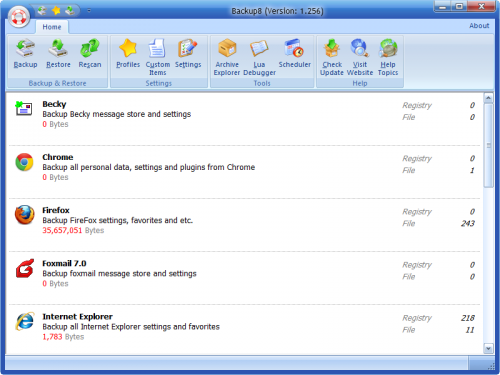Vista Business Restore
How to Restore Your System to an Earlier Point. Computers. Operating Systems. Windows XP & Vista. How to Restore Your System to an Earlier Point. By Dan Gookin When you do a system restore, Windows 7 and Windows Vista choose the most recent system restore date and time.
In some scenarios, you may.
Sometimes, you may want a less recent restore point. For example, when a system upgrade and a software addition are botched, you need to restore your computer to a point from several days earlier. To restore to an earlier point, follow these steps.
Save all your files. System Restore operation restarts the computer.
System Restore is a feature first introduced in Windows XP. It allows users to restore their computers to a previous state without losing personal data files. Disk Image software - Active@ Disk Image can do a backup as well as clone the full hard drive. A backup image may be stored on a USB drive, network storage, burned. This article presents options for performing a system restore, resetting your installation of Windows, or restoring Microsoft Windows to factory condition on a Dell. The Restore Solutions FAQ, Frequently Asked Questions. How to protect yourself from the huge Malware attack of May 2017.
Save your files then close your programs. Do it now. From the Start button menu, choose All Programs. That is, unless you’ve recently restored the system, in which case you see an option to undo the System Restore. Click the Next button. A list of recent restore points appears.
Windows Vista Business Restore Disk

System Restore Manager is a freeware portable utility which allows you to completely manage your Windows system restore points and customize its options. Sorry if I missed this above. Is what you are describing also what happens when you manually create a System Restore Point when you are about to install a new program? Utility for restoring backups made on Windows XP and Windows Server 2003 to computers running Windows Vista and Microsoft® Windows Server® 2008. Windows Vista does not contain a Recovery Console, therefore doing a repair install like that we are familiar with in Windows XP is not possible. System Restore is a Windows feature that can help fix certain types of crashes and other computer problems. Here’s how it works, how to set it up, and how to use it.

The most recent restore point is selected, which is most likely the one you want. If you don’t see recent restore points and instead see another screen, choose the Recommended Restore option. Choose the proper restore date.
To restore to an earlier time, place a check mark in the square by the option Show Restore Points Older than 5 Days. Click the Next button.
A screen detailing which hard drives to restore is shown. The one you need is most likely already selected. Click the Next button. You may not have a second Next button, in which case you just: Click the Finish button. Click Yes to restart Windows.
Wait while Windows restarts. After you log in again, you need to wait a bit more. Eventually, you see a confirmation message explaining that Windows has been restored: You see (after a seemingly endless amount of time) a dialog box explaining how the System Restore operation went; click the Close button. Restoring the system is also a start- up option. Choose the option Last Known Good Configuration, which is more or less the last system restore point. That’s a good choice, especially when the computer is unusable otherwise.
Choosing an older restore point increases the likelihood that the restore won’t be successful. If possible, you can try to incrementally restore by choosing a more recent restore point and then running System Restore again with an increasingly older restore point. When you restore to an older restore point, you remove any software and hardware updates installed in the “between time,” where some programs and certain hardware don’t work and require reinstallation after the System Restore operation is complete.


/https%3A%2F%2Fassets.over-blog.com%2Ft%2Fcedistic%2Fcamera.png)